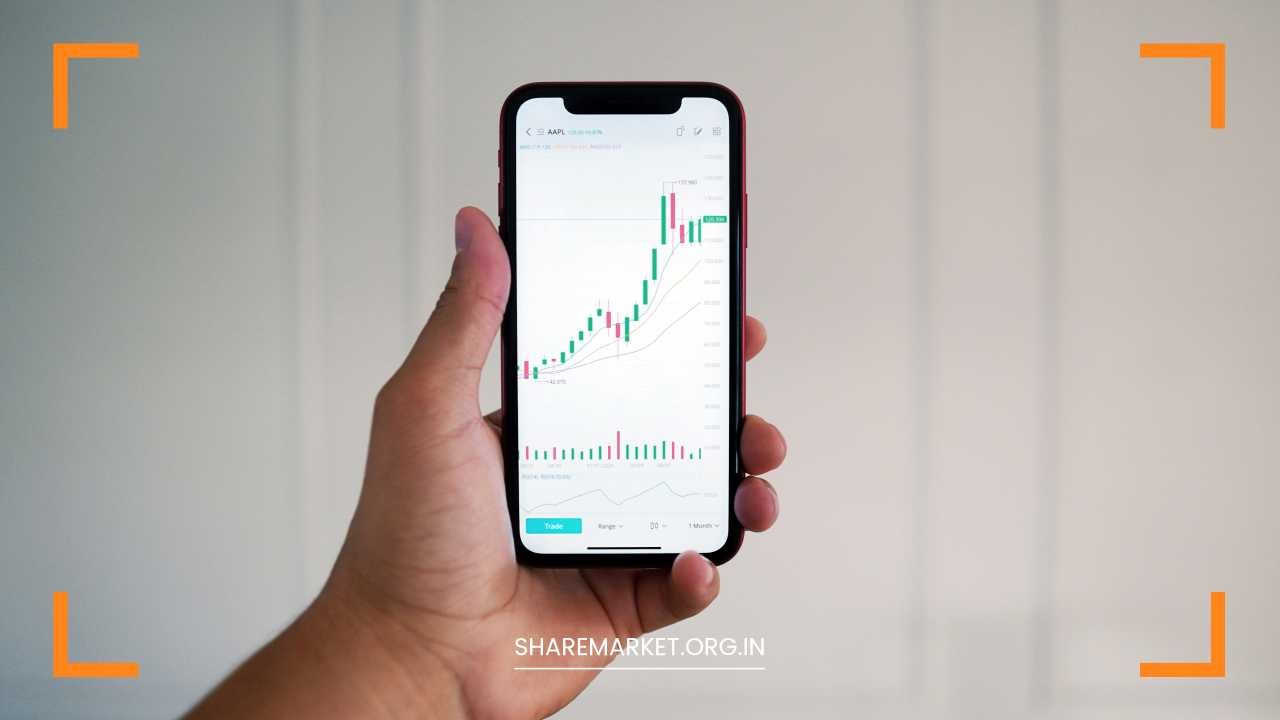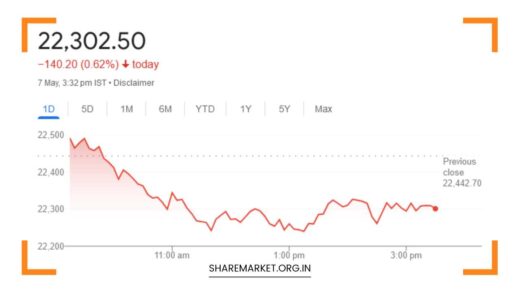What is Demat Account

What is Demat Account
Demat Accounts: Your Gateway to the Stock Market
Understanding Demat Accounts
A Demat account, short for dematerialized account, is an electronic platform designed to hold securities such as shares, bonds, and mutual funds in a digital format. It eliminates the need for physical share certificates, streamlining the process of managing investments.
Instead of dealing with cumbersome paperwork and the risk of losing physical documents, a Demat account offers a secure digital locker for your investments.
This modern system simplifies trading, enhances security, and provides easy access to your financial assets. By converting physical certificates into electronic form, Demat accounts facilitate quicker transactions and more efficient management of your investment portfolio.
How Does a Demat Account Work?
To understand how a Demat account functions, it’s essential to recognize the roles of two primary entities involved in the process: depositories and depository participants (DPs).
Depositories are central agencies responsible for holding securities in electronic form. They act as custodians and facilitators of electronic trading and settlement.
In India, the two major depositories are National Securities Depository Limited (NSDL) and Central Depository Services (India) Limited (CDSL).
These organizations maintain a database of all securities held in electronic format and ensure that transactions are accurately recorded and processed.
Depository Participants (DPs) are financial institutions, such as banks and brokerage firms, that are authorized by depositories to provide Demat account services to investors.
They act as intermediaries between the depositories and investors. When you open a Demat account, you do so through a DP, who will manage your account and facilitate transactions on your behalf.
Here’s a step-by-step explanation of how a Demat account works:
- Opening the Account: To start, you need to open a Demat account with a DP. This involves filling out an application form and providing necessary KYC (Know Your Customer) documents.
- Depository Connection: Once your account is opened, the DP connects it to a depository (NSDL or CDSL). This connection allows the DP to perform transactions on your behalf.
- Crediting Shares: When you purchase securities, the shares are credited to your Demat account by the DP. The shares are transferred electronically from the seller’s account to yours.
- Transactions and Record Keeping: All transactions—buying, selling, and transferring shares—are recorded electronically in your Demat account. This digital format ensures accurate and efficient tracking of your holdings.
- Settlement: When you sell securities, the shares are debited from your Demat account and credited to the buyer’s account. The proceeds from the sale are transferred to your bank account.
Overall, a Demat account simplifies the management of your investments by eliminating the need for physical certificates and providing a streamlined, electronic record of all transactions.
Benefits of a Demat Account
The transition from physical to digital shareholding through a Demat account offers numerous advantages that significantly enhance the investment experience. Here are some key benefits:
- Security: One of the most significant advantages of a Demat account is the enhanced security it provides. Traditional physical share certificates are susceptible to risks such as loss, theft, or damage. By holding securities electronically, Demat accounts eliminate these risks, ensuring that your investments are safe and protected.
- Convenience: Managing your investments becomes significantly easier with a Demat account. Instead of handling physical certificates and paperwork, you can manage everything online. This includes viewing your holdings, placing buy and sell orders, and tracking the performance of your investments. The digital format simplifies record-keeping and reduces administrative hassles.
- Speed: Transactions conducted through a Demat account are executed much faster compared to the traditional paper-based system. The electronic format allows for quicker settlement of trades, reducing the time it takes to transfer shares between buyers and sellers. This efficiency is particularly beneficial in a fast-paced trading environment.
- Cost-Effective: Demat accounts can be more economical than maintaining physical certificates. The transaction charges associated with Demat accounts are generally lower compared to the costs involved in handling physical securities. This includes reduced fees for transferring shares and lower administrative expenses.
- Accessibility: With a Demat account, you can access your investments from virtually anywhere, provided you have an internet connection. This global accessibility allows you to monitor and manage your portfolio in real-time, whether you are at home, at work, or traveling. This flexibility ensures that you can make timely decisions and stay updated on market movements.
A Demat account offers a secure, convenient, and cost-effective way to manage your investments. The transition to digital shareholding simplifies the investment process, accelerates transaction times, and provides greater accessibility, making it a valuable tool for modern investors.
Opening a Demat Account
Opening a Demat account involves a straightforward but essential process to ensure that your investments are managed efficiently and securely. Here’s a step-by-step guide to help you navigate the process:
- Selecting a Depository Participant (DP): The first step in opening a Demat account is choosing a DP. A DP can be a bank or a dedicated brokerage firm. It’s crucial to research and compare various DPs based on factors such as account maintenance charges, transaction fees, customer service, and the functionality of their online platforms. Evaluate their reputation and the services they offer to ensure they meet your investment needs.
- Submitting Documents: Once you’ve selected a DP, you’ll need to provide several documents to comply with regulatory requirements. These typically include:
- KYC (Know Your Customer) Documents: Proof of identity, such as a passport, driver’s license, or Aadhaar card.
- Address Proof: Documents like utility bills, bank statements, or rental agreements that confirm your current address.
- PAN Card: Your Permanent Account Number card, which is mandatory for tax purposes and financial transactions in India.
These documents help verify your identity and address, ensuring the security of your account.
- Account Opening: After submitting the necessary documents, the DP will process and verify your information. This step may involve a physical or digital verification process, depending on the DP’s procedure. Once your details are verified, the DP will open your Demat account. You’ll receive an account number and other relevant information to access your account.
- Linking a Trading Account: To facilitate buying and selling of securities, you’ll generally need to link your Demat account with a trading account. A trading account is essential for executing buy and sell transactions on the stock market. Many DPs offer both Demat and trading account services, allowing for a seamless integration between the two.
By following these steps, you can efficiently open a Demat account and begin managing your investments with greater ease and security.
Demat Account Charges
While Demat accounts provide a host of benefits, including security, convenience, and efficiency, it’s important to understand the various charges associated with them. Here’s a detailed overview of these charges:
- Account Opening Charges: This is a one-time fee that you pay when opening a Demat account. While some Depository Participants (DPs) offer free account opening, others may charge a fee. It’s advisable to check this cost before choosing a DP, as it can vary widely.
- Annual Maintenance Charges (AMC): This is a recurring fee that is billed yearly for maintaining your Demat account. The AMC covers the administrative costs associated with managing your account. The amount can differ from one DP to another, so it’s important to compare these charges to find the most economical option for you.
- Demat Transaction Charges: These are fees levied for buying, selling, or transferring securities within your Demat account. The charges are typically based on the number or value of transactions. They may be fixed or a percentage of the transaction amount, depending on the DP’s fee structure.
- Custodial Charges: Some DPs may charge a fee for holding and safeguarding your securities. This is often a small fee but can add up over time, especially if you hold a large number of securities.
Given these various charges, it’s essential to carefully compare the fee structures of different DPs before opening an account.
Look at both the one-time and recurring fees, and consider how they align with your investment activity and volume.
By selecting a DP with a competitive fee structure, you can minimize costs and maximize the value you receive from your Demat account.
Choosing the Right Demat Account
Choosing the right Demat account is crucial for effectively managing your investments and ensuring a smooth investment experience. Here are key factors to consider when selecting a Demat account:
- DP’s Reputation: The reputation of the Depository Participant (DP) plays a significant role in your decision-making process. Opt for a DP that is well-established and has a track record of reliability and trustworthiness. Research the DP’s history, customer reviews, and regulatory compliance to ensure they are reputable. A reliable DP provides better security for your investments and offers efficient customer service.
- Service Charges: Comparing service charges is essential to find the most cost-effective option. Charges typically include account opening fees, annual maintenance charges (AMC), transaction fees for buying, selling, or transferring securities, and custodial charges for holding securities. Different DPs have varying fee structures, so it’s important to review and compare these charges across multiple DPs. Ensure there are no hidden fees and understand the total cost of maintaining the account.
- Online Platform: In today’s digital age, having access to a user-friendly online platform is crucial. Ensure the DP offers a robust and intuitive online platform that allows you to manage your investments efficiently. The platform should provide features like easy access to account information, seamless transaction capabilities, real-time updates, and comprehensive reporting tools. A good online platform enhances your ability to monitor and manage your investments effectively.
- Additional Services: Some DPs offer value-added services beyond basic account management. These can include investment advice, research reports, portfolio management services, and market insights. While these additional services might come with extra costs, they can provide valuable support and information to help you make informed investment decisions. Evaluate whether these additional services align with your investment goals and if they add value to your overall investment strategy.
By carefully considering these factors—reputation, service charges, online platform usability, and additional services—you can select a Demat account that best suits your needs and enhances your investment experience.
Conduct thorough research and choose a DP that offers a balance of reliability, affordability, and functionality to meet your investment requirements.
Demat Account and Taxation
Understanding the tax implications of your Demat account is crucial for effective financial planning and compliance. Here’s a detailed overview of how different aspects of your Demat account can affect your taxes:
- Short-Term Capital Gains (STCG): If you sell securities that you have held for less than a year, the profits you make are considered short-term capital gains. These gains are typically taxed at your applicable income tax slab rate, which is based on your overall income for the fiscal year. This means that the tax rate on these gains can range from 5% to 30%, depending on your total taxable income. It’s important to accurately report these gains on your tax return to avoid any issues with tax authorities.
- Long-Term Capital Gains (LTCG): Profits from the sale of securities held for more than one year are categorized as long-term capital gains. These gains are taxed at a concessional rate, which is generally lower than the rate for short-term capital gains. In India, long-term capital gains exceeding ₹1 lakh in a financial year are taxed at 10% without the benefit of indexation (as of the latest regulations). This concessional tax rate is designed to encourage long-term investment and reward investors for holding securities over an extended period.
- Dividend Income: Dividends received from shares held in your Demat account are considered part of your income. As of the latest regulations, dividends are taxed according to the income tax slab applicable to you. The company paying the dividend will deduct tax at source (TDS) before disbursing the dividend, but you must include this income in your total taxable income and report it on your tax return. The TDS deducted is a prepayment of your income tax liability, and you may need to pay additional taxes depending on your overall income.
In addition to these primary tax implications, it’s also important to be aware of any potential tax benefits or exemptions that may apply.
For example, certain exemptions might be available for specific types of securities or investments, which can affect your overall tax liability.
Given the complexity of tax regulations and their frequent updates, it’s highly advisable to consult a tax professional or financial advisor for personalized guidance.
A tax expert can help you navigate the intricacies of tax laws, optimize your tax strategy, and ensure that you remain compliant with current regulations.
This can help you make informed decisions and manage your tax liabilities effectively based on your individual financial situation.
Demat Account Security
Protecting your Demat account is crucial to ensure the security of your investments. Here are some essential security measures to follow:
- Strong Passwords: Create complex and unique passwords for your Demat account and trading platform. Avoid using easily guessable information such as birthdays or common words. A strong password typically includes a mix of uppercase and lowercase letters, numbers, and special characters. Regularly changing your passwords can also enhance security.
- Two-Factor Authentication (2FA): Enable two-factor authentication for an additional layer of security. 2FA requires you to provide a second form of verification—such as a code sent to your mobile phone or generated by an authentication app—along with your password. This reduces the risk of unauthorized access even if your password is compromised.
- Beware of Phishing Attacks: Stay vigilant against phishing attempts. Be cautious of unsolicited emails, messages, or calls asking for personal or financial information. Verify the authenticity of any communication you receive before providing sensitive details. Always contact your DP directly through official channels if you have any concerns.
- Keep Software Updated: Regularly update your operating system, antivirus software, and any other security tools. Software updates often include patches for vulnerabilities that could be exploited by hackers. Keeping your devices and software up-to-date helps protect against security threats and malware.
By following these security measures, you can significantly reduce the risk of unauthorized access and protect your Demat account from potential threats.
Demat Account and Dematerialization
If you still hold physical share certificates, you can convert them into electronic form through a process called dematerialization. This involves submitting the physical certificates to your DP, who will credit the shares to your Demat account.
Final Remarks
Demat accounts have revolutionized the way we invest. By understanding the basics and taking necessary precautions, you can harness the benefits of this digital platform to build a successful investment portfolio.

















